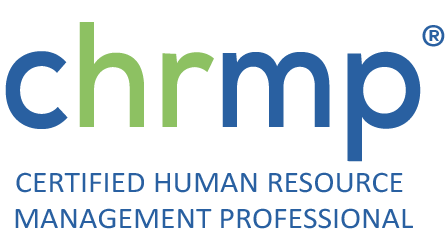The ever-evolving business landscape demands more from Human Resources (HR) than just payroll and benefits. Today’s HR departments play a critical role in attracting, developing, and retaining top talent, ultimately driving organizational success. To effectively measure and communicate their impact, HR professionals are increasingly turning to a powerful tool: the HR scorecard (often referred to as the HR balanced scorecard, hrm balanced scorecard, or balanced scorecard in HR).
Thank you for reading this post, don't forget to subscribe!While the term “scorecard” might evoke images of sports statistics, the HR scorecard transcends traditional financial metrics. It’s a strategic management framework designed specifically for HR departments. This framework provides a holistic view of HR’s effectiveness in achieving its goals and aligning with the overall business strategy.
Table of Contents
ToggleWhy is an HR scorecard essential?
Imagine navigating a complex journey without a map or compass. That’s essentially what happens when an HR department operates without a clear roadmap for success. The HR scorecard acts as that essential guide, providing a framework to:
- Define Strategic Alignment: Bridge the gap between the organization’s overall business strategy and HR’s specific goals. How can HR initiatives contribute to achieving broader business objectives? The scorecard helps answer this crucial question by establishing a clear line of sight between HR activities and organizational success.
- Measure HR Effectiveness: Move beyond intuition and anecdotal evidence. The HR scorecard allows HR to identify and track key metrics that demonstrate the impact of HR programs and initiatives. This data-driven approach enables HR to quantify its value to the organization.
- Improve Decision-Making: Faced with resource constraints and competing priorities, HR needs a data-driven approach to decision-making. The HR scorecard provides actionable insights that help HR leaders prioritize initiatives, allocate resources effectively, and demonstrate the return on investment (ROI) of HR programs.
- Enhance Communication and Transparency: The HR scorecard facilitates clear and concise communication about HR goals and progress with organizational stakeholders. This fosters a shared understanding of HR’s role in driving business success.
Understanding the Difference: HR Scorecard vs. Balanced Scorecard
It’s important to distinguish between the HR scorecard and the broader concept of the balanced scorecard. Developed by Robert Kaplan and David Norton, the balanced scorecard (BSC) is a strategic management framework that translates an organization’s vision and strategy into a comprehensive set of performance metrics. While the HR scorecard leverages the core principles of the BSC, it specifically focuses on HR metrics and goals, aligning them with the broader business strategy.
Who Should Use an HR Scorecard?
The HR scorecard is a valuable tool for HR professionals of all levels, from HR directors to HR business partners. It empowers HR to demonstrate its strategic value and gain a seat at the decision-making table. Additionally, the scorecard can be customized to different organizational sizes and industries, making it a versatile tool for any HR department that seeks to measure and improve its impact.
In the following sections, we’ll delve deeper into the HR scorecard framework, outlining the key steps for creating your own customized scorecard and leveraging its power to transform your HR department from a cost center to a strategic business partner.
The Four Perspectives of Balanced Scorecard.
A Step-by-Step Guide to Creating Your Own HR Scorecard
Here, we’ll delve into the crucial steps of creating your own HR scorecard:
Step 1: Define Your HR Strategy and Alignment
Defining your HR strategy and ensuring its alignment with the overall business goals is the foundational step in creating an effective HR scorecard. This process involves understanding the strategic objectives of the organization, identifying the specific ways HR can contribute to these objectives, and developing a comprehensive HR strategy that outlines the role of HR in supporting the business. By aligning HR activities with business goals, organizations can ensure that HR initiatives are not only supportive but also integral to achieving overall business success. The following components make up the first step:
-
Identify the Organization’s Overall Business Strategy and Goals
The first substep in defining your HR strategy is to thoroughly understand the organization’s overall business strategy and goals. This involves engaging with senior leadership to discuss and identify the strategic priorities of the organization, which may include goals related to growth, innovation, customer satisfaction, market leadership, or cost efficiency. Understanding these priorities helps in shaping HR initiatives that directly support these broader objectives.
For example, if a company’s strategic goal is to become a market leader through innovation, HR should focus on metrics and initiatives that foster a culture of innovation. This might include metrics such as the number of new product ideas generated, the speed of bringing new ideas to market, and the training programs aimed at fostering innovative thinking among employees.
-
Determine How HR Can Contribute to Achieving Those Goals
Once the business strategy and goals are clear, the next step is to determine how HR can contribute to achieving these goals. This involves analyzing various HR functions such as recruitment, training, performance management, and employee engagement to identify specific areas where HR activities can have a direct and positive impact on the business objectives.
For instance, if a key business goal is to enhance customer satisfaction, HR can contribute by improving employee engagement and providing comprehensive training programs. Engaged and well-trained employees are more likely to deliver high-quality customer service, thereby directly impacting customer satisfaction levels.
-
Develop a Clear HR Strategy
With a thorough understanding of the business strategy and a clear identification of how HR can contribute, the next step is to develop a comprehensive HR strategy. This strategy should outline HR’s objectives, priorities, and initiatives that align with the business goals. The HR strategy acts as a roadmap for all HR activities, ensuring they are strategically focused and aligned with the broader business objectives.
For example, a technology company focused on innovation might develop an HR strategy that prioritizes talent acquisition from leading tech schools, continuous skills development, and creating a collaborative work environment to drive innovative outcomes. This ensures that every HR activity is aimed at supporting the company’s strategic goal of being an innovation leader.
Step 2: Select HR Metrics and Targets
Selecting appropriate HR metrics and setting specific targets is a critical step in creating a robust HR scorecard. This step involves identifying a balanced mix of lagging and leading metrics that align with the HR strategy, setting specific and measurable targets for each metric, and ensuring the data required to track these metrics is high-quality and readily available. By doing so, organizations can measure HR performance effectively and ensure it contributes to achieving business goals.
-
Identify a Balanced Mix of Lagging and Leading Metrics
The first substep is to identify a balanced mix of lagging and leading metrics. Lagging metrics, such as employee turnover rate, provide insights into past performance and outcomes. They help in understanding what has already happened in the organization. On the other hand, leading metrics, such as employee satisfaction or training hours per employee, are forward-looking and help predict future performance. These metrics provide early indicators of potential issues or successes and help in proactively managing HR activities.
For example, tracking employee turnover rate (a lagging metric) provides insights into the stability of the workforce, while monitoring employee engagement scores (a leading metric) helps predict future retention trends and identify areas for improvement in the workplace environment.
-
Set Specific and Measurable Targets
Once the metrics are identified, the next step is to set specific and measurable targets for each metric. These targets should be ambitious yet achievable, providing clear benchmarks for success. Setting specific targets ensures that everyone in the organization understands the expectations and works towards achieving them.
For instance, if the goal is to reduce employee turnover, a specific target could be to lower the turnover rate by 10% within the next year. For employee satisfaction, the target might be to achieve an average satisfaction score of 4.5 out of 5. These specific targets help in measuring progress and assessing the effectiveness of HR initiatives.
-
Ensure High-Quality and Readily Available Data
The accuracy and availability of data are crucial for effectively tracking HR metrics. This substep involves ensuring that the necessary data is of high quality, consistent, and readily available. High-quality data ensures that the metrics are accurate and reliable, which is essential for making informed decisions.
For example, if tracking employee engagement scores, it is important to ensure that the survey data is collected consistently, analyzed accurately, and accessible for timely decision-making. This may involve improving HR information systems, ensuring data accuracy, and establishing processes for regular data collection and analysis.
Step 3: Design and Implement HR Initiatives
Designing and implementing targeted HR initiatives is critical for achieving the metrics and targets defined in your HR scorecard. This step involves developing specific HR programs and practices that drive desired outcomes, considering the cost-effectiveness of each initiative, and ensuring alignment of HR policies, processes, and practices with the HR initiatives and scorecard goals. Effective HR initiatives are essential for translating strategic objectives into actionable outcomes.
-
Develop HR Initiatives That Target Identified Metrics
The first substep is to create HR initiatives that directly target the metrics identified in your scorecard. These initiatives should be aligned with the HR strategy and business goals, ensuring they effectively address the key areas of focus. This involves designing programs and practices that improve performance in the targeted metrics.
For example, to improve employee satisfaction, initiatives might include enhanced training programs, wellness initiatives, career development opportunities, and employee recognition programs. These initiatives directly target the metrics related to employee satisfaction and contribute to achieving the set targets.
-
Consider Cost-Effectiveness and ROI
Evaluating the cost-effectiveness of each HR initiative and prioritizing those with the highest return on investment (ROI) is essential for efficient resource allocation. This substep involves analyzing the costs and expected benefits of each initiative to ensure that resources are used effectively and initiatives deliver maximum impact.
For instance, a mentoring program might be a cost-effective initiative with high ROI by improving employee engagement and retention. By prioritizing such initiatives, organizations can ensure that their HR activities are both impactful and efficient.
-
Align HR Policies, Processes, and Practices
Ensuring that HR policies, processes, and practices are aligned with the HR initiatives and scorecard goals is crucial for smooth implementation and enhanced effectiveness. This substep involves reviewing and updating HR policies and processes to support the initiatives and ensure they contribute to achieving the scorecard targets.
For example, if an initiative focuses on improving performance management, ensure that the performance appraisal process is aligned with this goal and supports continuous feedback and development. This alignment facilitates the effective implementation of initiatives and enhances their impact on achieving the desired outcomes.
Step 4: Align HR Systems and Technology
Aligning HR systems and technology is essential for efficient data collection, analysis, and reporting. This step ensures that the necessary infrastructure is in place to support the HR scorecard, enabling accurate tracking of HR metrics and facilitating data-driven decision-making. Effective use of HR technology enhances the overall efficiency and effectiveness of HR activities.
-
Ensure HR Systems Support Data Collection and Analysis
The first substep is to configure HR systems, such as performance management and talent management systems, to support data collection and analysis for the HR scorecard. This involves ensuring that the systems are capable of capturing the necessary data and providing insights for tracking HR metrics.
For example, an integrated HRIS (Human Resource Information System) can streamline data collection and provide real-time analytics on key HR metrics, such as employee performance, engagement, and turnover rates. This capability is essential for accurate and timely decision-making.
-
Streamline HR Processes
Streamlining HR processes to improve efficiency and data accuracy is the next substep. This involves automating repetitive tasks, reducing manual data entry, and ensuring that data flows seamlessly across HR systems. Efficient HR processes enhance the accuracy and availability of data, which is crucial for tracking metrics effectively.
For instance, automating the onboarding process can enhance efficiency and ensure that employee data is captured accurately from the start. This reduces the risk of errors and ensures that the data used for tracking HR metrics is reliable and up-to-date.
Step 5: Communicate the HR Scorecard Effectively
Effective communication of the HR scorecard is vital for gaining buy-in from stakeholders and ensuring alignment across the organization. This step involves developing a clear communication plan, regularly updating stakeholders on progress, and using data visualization tools to present the scorecard data in an easily understandable format. Clear and consistent communication fosters a culture of accountability and continuous improvement.
-
Develop a Clear Communication Plan
The first substep is to create a communication plan that clearly explains the HR scorecard, its purpose, and its benefits. This plan should address the needs and concerns of different stakeholders, from senior leadership to front-line employees. A well-communicated HR scorecard ensures that everyone understands its importance and how it contributes to achieving business goals.
For example, hold workshops and training sessions to educate managers on how to use the HR scorecard to improve team performance. Providing clear explanations and practical examples helps in gaining their buy-in and support.
-
Regularly Communicate Progress
Regularly updating stakeholders on the progress of HR metrics and goals is essential for keeping everyone informed and engaged. This involves sharing periodic reports, holding review meetings, and providing updates on key achievements and areas for improvement. Regular communication fosters a sense of accountability and encourages continuous efforts towards achieving the scorecard targets.
For instance, share quarterly reports highlighting key achievements, areas for improvement, and upcoming initiatives. This keeps stakeholders informed about the progress and helps in maintaining momentum towards achieving the goals.
-
Use Data Visualization Tools
Utilize data visualization tools to present HR scorecard data in an easy-to-understand format. Visual representations such as charts, graphs, and dashboards make it easier for stakeholders to grasp complex information quickly and make informed decisions. Effective use of data visualization enhances the clarity and impact of the communicated information.
For example, use a dashboard to display real-time metrics on employee engagement, turnover, and performance, allowing managers to make informed decisions at a glance. This visual approach ensures that the data is accessible and actionable for all stakeholders.
Step 6: Monitor and Evaluate
Continuous monitoring and evaluation are crucial for the success of the HR scorecard. This step ensures that progress is tracked, stakeholders are held accountable, and the scorecard remains relevant. Regular monitoring and evaluation help in identifying areas for improvement and making necessary adjustments to achieve the desired outcomes.
-
Regularly Track Progress
The first substep is to regularly monitor progress on HR metrics and compare them against the set targets. This involves conducting periodic reviews and analyzing the data to identify trends and areas where performance is on track or needs improvement. Regular tracking helps in maintaining focus and ensuring continuous efforts towards achieving the targets.
For example, conduct monthly reviews of employee turnover rates and engagement scores to ensure they are trending in the right direction. This helps in identifying issues early and taking corrective actions promptly.
-
Review and Update the HR Scorecard
Periodically reviewing and updating the HR scorecard to reflect changes in business strategy or HR priorities is essential for maintaining its relevance. This substep involves assessing the current metrics and targets, evaluating their alignment with the business goals, and making necessary adjustments to ensure the scorecard continues to drive relevant outcomes.
For instance, if the company shifts its focus from growth to cost efficiency, update the HR scorecard to include metrics related to cost-saving initiatives and efficiency improvements. This ensures that the scorecard remains aligned with the evolving business strategy.
-
Use the HR Scorecard for Data-Driven Decisions
Leverage the HR scorecard to make data-driven decisions about HR initiatives. This involves using the insights gained from tracking metrics to identify areas for improvement and implement changes that drive better outcomes. Data-driven decision-making ensures that HR activities are aligned with strategic goals and contribute effectively to achieving business success.
For example, if data shows a decline in employee engagement, analyze the underlying causes and implement targeted initiatives such as leadership training or team-building activities to address the issue. Using the scorecard data to inform decisions helps in making impactful changes and achieving the desired outcomes.
Step 7: Link HR Metrics to Business Outcomes
Linking HR metrics to business outcomes demonstrates the value of HR and its contribution to overall business success. This step involves identifying metrics that impact business outcomes, tracking their influence, and showcasing the strategic impact of HR initiatives. Demonstrating this link enhances the perceived value of HR within the organization and supports strategic decision-making.
-
Identify Metrics Linked to Business Outcomes
The first substep is to go beyond basic HR metrics and identify those that can be linked to business outcomes such as customer satisfaction, revenue growth, or market share. This involves analyzing the correlation between HR activities and business performance to demonstrate the strategic impact of HR initiatives.
For example, track how improvements in employee engagement correlate with customer satisfaction scores and sales performance. This helps in highlighting the contribution of HR to achieving business goals and showcasing its strategic value.
-
Track the Impact of HR Initiatives
Monitoring the impact of HR initiatives on business outcomes is essential for demonstrating the value of HR to the organization. This involves analyzing data to show how specific HR activities drive business success and contribute to achieving strategic objectives.
For instance, measure the impact of a leadership development program on team performance and productivity, highlighting the ROI of the initiative. By tracking the impact of HR initiatives, organizations can showcase the strategic value of HR and its contribution to overall business success.
Conclusion:
Creating a modern HR scorecard is a comprehensive process that involves multiple strategic steps, each contributing to the overall effectiveness and alignment of HR activities with business goals. This detailed guide has walked you through the crucial steps, from defining your HR strategy and alignment, selecting appropriate metrics and targets, designing and implementing HR initiatives, aligning HR systems and technology, to effectively communicating, monitoring, and evaluating your HR scorecard, and finally linking HR metrics to business outcomes. By systematically following these steps, organizations can ensure that their HR departments not only support but also drive business success.





